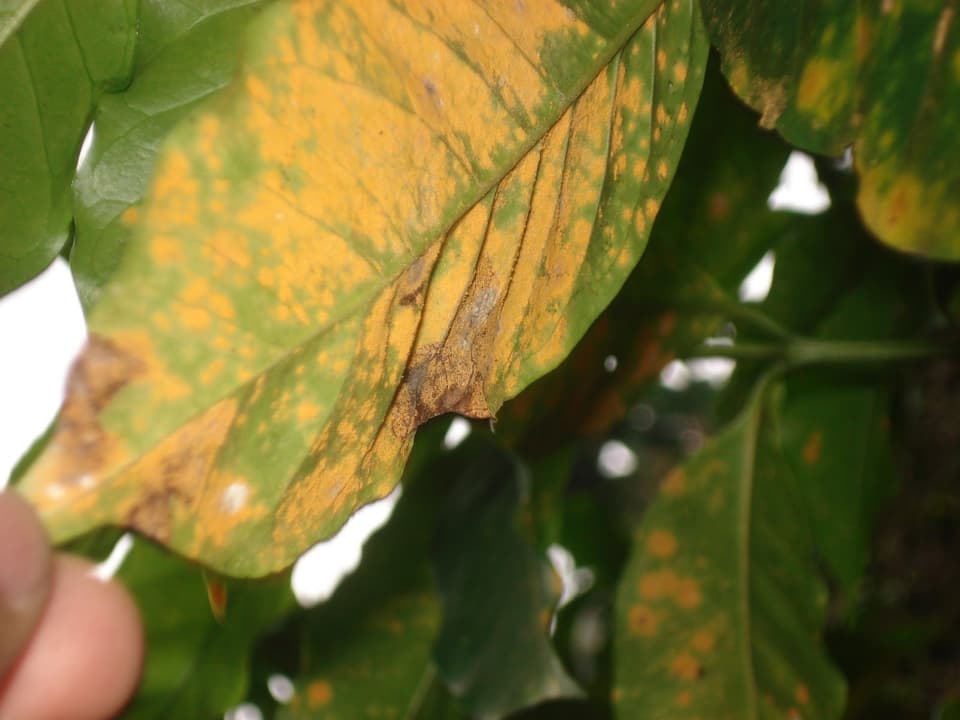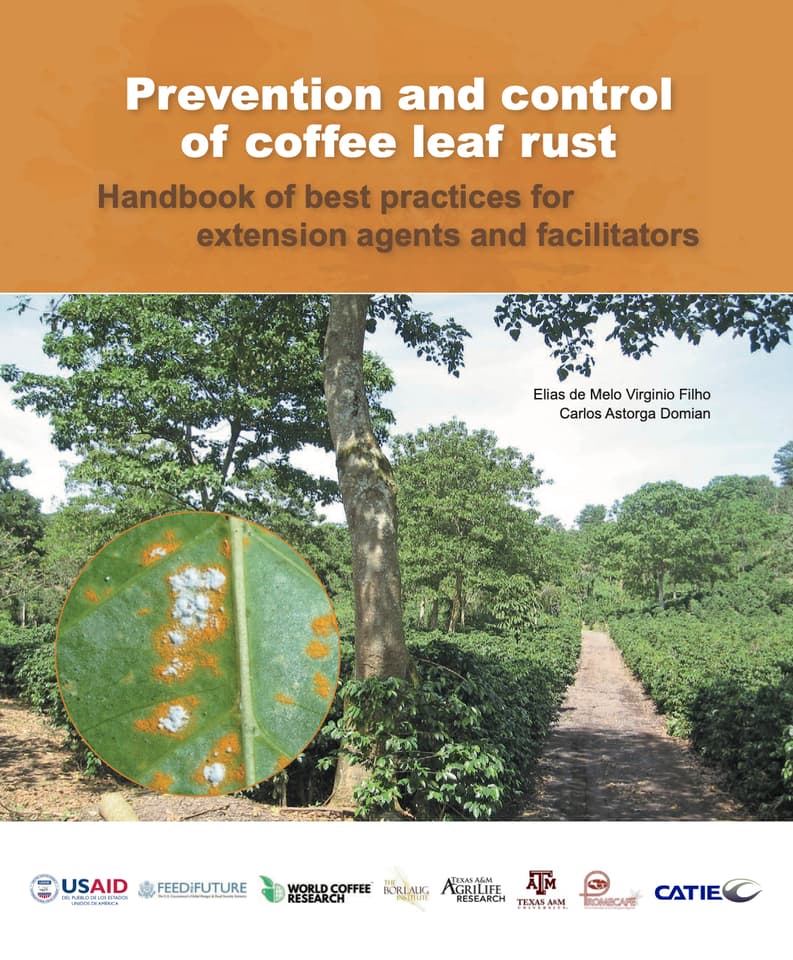World Coffee Research publishes manual for coffee leaf rust
A manual for technicians and agronomists / Un manual de buenas prácticas para técnicos y facilitadores
Starting in the 2011-2012 harvest season, coffee farmers across Central America began noticing an unsettling sight: The leaves of their coffee trees were covered in a powdery orange growth. It was coffee leaf rust, caused by the fungus Hemileia vastatrix. When a plant is badly affected, the infected leaves drop to the ground, and short-circuit the plant’s ability to generate energy and thus yield a crop. For many farmers, it caused the loss of not just one crop cycle but two or more. Meaning no income for multiple years in a row for an already vulnerable population of smallholders. (For more information on the disease, read here.)

Within a year, the disease had spread across the region. Five years later, the Central American coffee leaf rust epidemic had devastated the region, affecting 70% of farms. Over 1.7 million coffee workers lost their jobs and it caused $3.2 billion in damage and lost income. Many farmers gave up on farming coffee and will not come back.
The Central American coffee leaf rust crisis that began in 2011-2012 exposed a dire lack of good information about best practices for controlling rust. There was no accessible and reliable reference that explained what coffee rust was and how to control it. In order to address this, WCR and USAID teamed up with the Centro Agronómico Tropical de Investigación y Enseñanza (CATIE) in Costa Rica to take advantage of CATIE’s extensive expertise and library of agronomic research in order to compile known coffee rust management practices into a condensed, thorough, and accessible manual that can be used by researchers and technicians to make management recommendations to farmers. The manual is published in Spanish.
“This is long overdue,” says World Coffee Research CEO Tim Schilling. “This is the first time that a scientific bulletin has been published that explains the best agronomic practices for controlling rust and why they work. The chemical control of rust with fungicides is one important component, but often that’s the only thing farmers hear about. The manual goes far beyond fungicides, to address many different farm-level practices that reduce the risk of rust.”
Prevención y Control de la Roya del Café is divided into sections that describe the organism, the disease, and the various methods of control as well as how to transmit this information to coffee producers. An accompanying practical manual for farmers will be released in 2017.
Though the manual can’t turn back the clock and diminish the damage done in Central America during the last outbreak, it will be a key resource for the future. Even in the absence of a full-blown epidemic, coffee leaf rust is something that many farmers in the region need to manage day to day.
Schilling adds: “It’s a reference that governments, institutes, extensionists, and, most importantly, coffee growers can use so that we are better prepared to deal with coffee rust in the future.”
